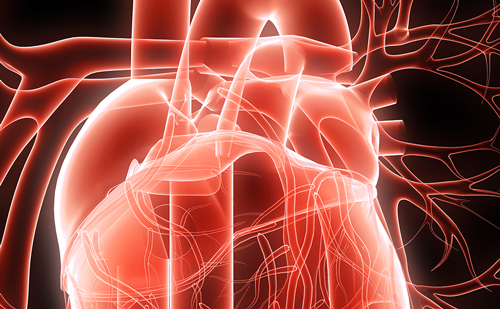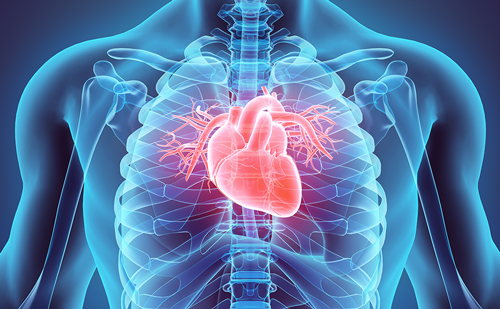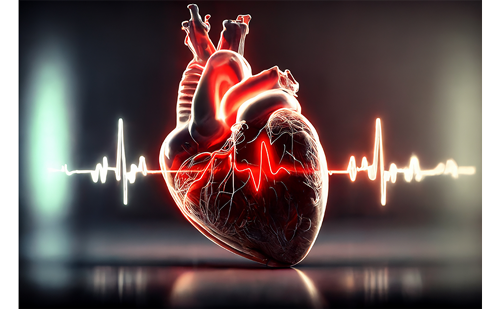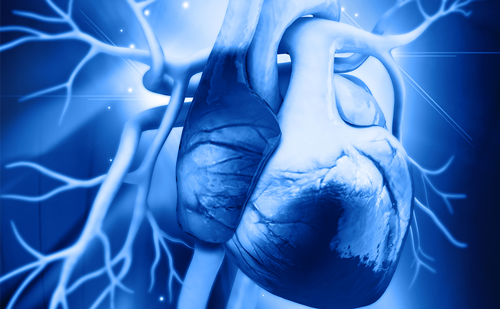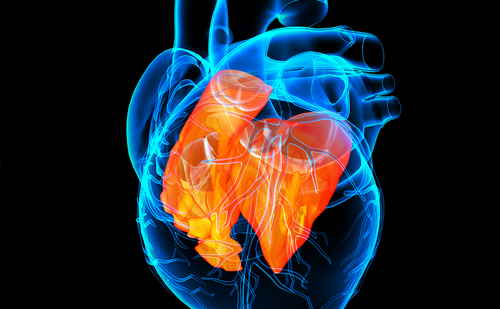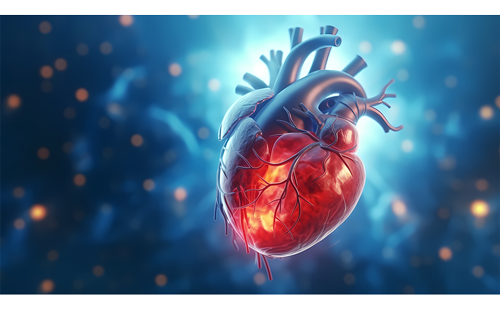Summary
Few clinical studies have shown an association between coronary artery disease (CAD) and osteoporosis. This cross-sectional study has shown that, among Indian postmenopausal women, the prevalence of CAD increases across lower bone mineral density categories. Femoral neck osteoporosis confers the higher odds of an underlying CAD.
Osteoporosis and coronary artery disease (CAD) represent two distinct but significant spectra of non-communicable diseases, which are individually associated with considerable morbidity and mortality. The ever-increasing subset of patients suffering from both these conditions are prone to greater deleterious effects. Osteoporosis is characterized by low bone mass and altered bone microarchitecture that predispose to fragility fractures if left untreated.1 CAD, on the other hand, is caused by atherothrombotic vascular occlusion that leads to progressive ischaemia of cardiac muscles (stable or unstable angina), myocardial infarction (MI) or death. Epidemiological studies have shown that both conditions have shared risk factors, such as diabetes mellitus, hypertension, smoking and alcohol consumption. Besides the traditional lifestyle-related factors, recent reports suggest that both sarcopenia and osteoporosis have emerged as risk factors for CAD.2 The potential link between these two conditions may be related to the calcification process involved with both bone mineralization and the development of atherosclerosis.3 The mineralization of non-collagenous proteins involved with bone resorption may also be related to the calcification of the vascular intima.4
The prevalence of osteoporosis in Indian postmenopausal women is about 40–50% at any site.5 Approximately 20% of women who have sustained a hip fracture have been reported to die in the first year after the fracture.6 Robbins et al. reported that the mortality rates in individuals with prevalent CAD and hip fractures were significantly higher than in those with heart disease and incident heart failure.7 A large population-based cohort study conducted in Taiwan on 23 million individuals showed that the CAD cohort had a significantly increased risk of vertebral compression fractures (adjusted hazard ratio [HR]: 1.74; 95% confidence interval [CI]: 1.60–1.89). Moreover, the cumulative incidence of osteoporosis was also significantly higher in the CAD cohort compared with the non-CAD cohort during the 10-year follow-up period.8 Another study by Xu et al. showed that severe coronary lesions were associated with lower T-scores.9 Wang et al. showed that bone mineral density (BMD) below a particular cut-off at the neck of the femur (NOF) was predictive of CAD.10
Despite epidemiological reports demonstrating a significant association between CAD and osteoporosis, specific data with regard to this association are limited from the Indian subcontinent. As the longevity of the Indian population increases, the burden of both osteoporosis and CAD also increases. It is, therefore, prudent to screen individuals with CAD for osteoporosis and vice versa. In this study, we aimed to study the association between CAD and osteoporosis among postmenopausal women from a teaching hospital in southern India.
Methodology
This was a cross-sectional study carried out in a university-affiliated teaching hospital in southern India. A total of 370 postmenopausal women were consecutively recruited from the endocrinology outpatient department (OPD). Women already on treatment for osteoporosis; those with chronic kidney disease stages IV and V, chronic liver diseases and uncontrolled hyperthyroidism and those on glucocorticoids were excluded. This study conforms to the Declaration of Helsinki and has been approved by the institutional review board (IRB) and ethics committee (IRB no. 15593) of the Christian Medical College and Hospital (CMCH), Vellore. All study participants provided written informed consent.
Assessment
All study participants were subjected to a detailed clinical evaluation that included the presence of CAD, which was based on an assessment of an electrocardiogram or echocardiography, and other comorbid conditions, such as essential hypertension and dyslipidaemia, and the mode of management. Patients were evaluated for causes of secondary osteoporosis, such as steroid use, Graves’ disease (by assessing thyroid function tests) and chronic kidney or liver diseases (renal function and liver function tests) based on the history, clinical assessment and biochemical testing. Anthropometric measures, such as height and weight, were assessed by standard measures.
Biochemical parameters
Fasting (overnight for 8 hours) venous blood samples were collected for the measurement of serum calcium (normal range: 8.3–10.4 mg/dL), phosphate (normal range: 2.5–4.5 mg/dL), alkaline phosphatase (normal range: 40–125 U/L), albumin (normal range: 3.5–5.0 g/dL), creatinine (normal range: 0.6–1.4 mg/dL), 25-hydroxy vitamin D (normal range: 30–75 ng/mL) and intact parathormone (iPTH; normal range: 8–50 pg/mL). Serum calcium, phosphate, albumin, creatinine and alkaline phosphatase were measured using colorimetric methods on a Beckman Coulter AU 5800 analyser (Beckman Coulter Diagnostics, Brea, CA, USA). An iced sample for iPTH was collected and estimated by the chemiluminescence assay (Advia Centaur XPT Immunoassay System; Siemens Healthcare, Tarrytown, NY, USA), and 25-hydroxy vitamin D (vitamin D) was measured using the electrochemiluminescence assay (Roche Cobas 6000 Immunoassay System; Roche Diagnostics, Mannheim, Germany). Bone turnover markers plasma C-terminal telopeptide of type 1 collagen (CTx) (normal range: 226–1,088 pg/mL) and N-terminal telopeptide of type 1 pro-collagen (P1NP) (normal range: 16–73.9 ng/mL) in postmenopausal women were measured using electrochemiluminescence immunoassay on a Roche Elecsys Modular E170 analyser (Roche Diagnostics, Mannheim, Germany).
Bone mineral density
Areal BMD (g/cm2) at the NOF and lumbar spine (LS) (L1–L4) was assessed using dual-energy X-ray absorptiometry scanner Hologic Machine Discovery A series (Bedford, MA, USA). The categorization of BMD into osteoporosis, osteopenia, and normal was done based on T-scores, as defined by the International Society for Clinical Densitometry guidelines.11
Statistical analyses
Data were analysed using SPSS v 24.0 (SPSS IBM Corp., Chicago, IL, USA). Continuous variables were expressed as mean and standard deviation (SD), and categorical variables were expressed as frequencies and percentages. The differences in means of continuous variables between the two groups were compared using Student’s t-test, and analysis of variance (ANOVA) was used for multiple group comparisons. The differences in proportions were compared using Pearson’s chi-squared test or Fisher’s exact test. Furthermore, a logistic regression analysis was performed to determine the factors that were significantly associated with CAD. For all comparisons, a two-tailed p-value of <0.05 was considered statistically significant.
Results
Clinical characteristics
A total of 370 postmenopausal women were recruited from among the postmenopausal women attending the endocrinology OPD. The mean (SD) age and body mass index (BMI) of the patients were 60.1 (6.0) years and 25.3 (14.3) kg/m2, respectively. The mean duration since menopause was 14.4 (7.8) years, with an average of three children born to a woman.
Among the study patients, 110 of 370 (29.7%) had an ischaemic heart disease (IHD), of which 40 of 110 (36.4%) had presented with an anterior-wall MI, 28 of 110 (25.5%) with an anterolateral MI and 26 of 110 (23.6%) with an inferior-wall MI. In the rest, the IHD was diagnosed incidentally. All women diagnosed to have CAD were on anti-platelet drugs, statins and beta-blockers.
Osteoporosis at either the NOF or the LS (L1–L4) was prevalent in 222 of 370 (60%) patients. Vitamin D deficiency (25-hydroxy vitamin D <20 ng/mL) was present in 173 of 370 (46.8%) patients, and 161 of 370 (43.5%) patients of the study cohort were obese, as defined by a BMI of ≥25 kg/m2.
Comparison of parameters between individuals with and without osteoporosis
Women with osteoporosis were significantly older and had a lower BMI and longer duration since menopause compared with their peers without osteoporosis. The mean (SD) fasting glucose was higher and the waist circumference was lower among those with osteoporosis compared with women without osteoporosis. Among the bone biochemical parameters, the bone resorption marker CTx was significantly higher among individuals with osteoporosis compared with those without osteoporosis (Table 1).
Table 1: Comparison of parameters between women with and without osteoporosis
|
Parameter |
Osteoporosis N=222 Mean (SD) |
No osteoporosis N=148 Mean (SD) |
p-value |
|
Age (years) |
61.7 (6.0) |
57.6 (5.0) |
<0.001 |
|
Body mass index (BMI) (kg/m2) |
23.4 (3.8) |
26.4 (4.9) |
0.011 |
|
Parity |
3.4 (1.6) |
3.3 (1.5) |
0.476 |
|
Duration of menopause (years) |
16.5 (7.8) |
10.8 (6.4) |
<0.001 |
|
Waist circumference (cm) |
80.4 (10.2) |
83.9 (11.3) |
0.003 |
|
Fasting blood glucose (mg/dL) |
103.2 (31.2) |
92.2 (36.2) |
0.029 |
|
Albumin-adjusted calcium (N: 8.3–10.4 mg/dL) |
9.4 (0.4) |
9.3 (0.5) |
NS |
|
Phosphate (N: 2.5–4.5 mg/dL) |
4.1 (0.5) |
3.9 (0.5) |
NS |
|
Creatinine (N: 05–1.2 mg/dL) |
0.7 (0.1) |
0.8 (0.3) |
NS |
|
Alkaline phosphatase (N: 40–125 U/L) |
96.4 (22.9) |
91.2 (26.4) |
0.088 |
|
Parathormone (N: 8–80 pg/mL) |
58.6 (26.9) |
53.2 (36.3) |
0.127 |
|
25-Hydroxy vitamin D (N: 30–75 ng/mL) |
23.0 (9.4) |
19.7 (10.6) |
0.002 |
|
CTx (N: 226–1,088 pg/mL) |
709.9 (285.7) |
555.2 (296.7) |
<0.001 |
BMI = body mass index; CTx = C-terminal telopeptide of type 1 collagen; N = number; SD = standard deviation.
Association between coronary artery disease and osteoporosis
The prevalence of CAD among those with and without osteoporosis was 87 out of 222 (39.2%) and 23 out of 148 (15.5%) patients, respectively (p<0.001). The odds of CAD among those with osteoporosis were 3.5 (95% CI: 2.1–5.9). The prevalence of CAD increased significantly (p<0.001) across the categories of normal (T-score ≥-1.0), osteopenia (-2.5 < T-score < -1.0), mild osteoporosis (-3.5 < T-score ≤ -2.5) and severe osteoporosis (T-score ≤-3.5) at both the femoral neck and the LS (Table 2).
Table 2: Prevalence of coronary artery disease across various bone mineral density categories at femoral neck and lumbar spine
|
Femoral neck |
|||
|
Normal T-score ≥-1.0 n (%) |
Osteopenia -2.5 < T-score < -1.0 n (%) |
Osteoporosis (mild) -3.5 < T-score ≤ -2.5 n (%) |
Osteoporosis (severe) T-score ≤-3.5 n (%) |
|
3/66 (4.5) |
46/189 (24.3) |
59/111 (53.2) |
2/4 (50) |
|
Lumbar spine |
|||
|
Normal T-score ≥-1.0 n (%) |
Osteopenia -2.5 < T-score <-1.0 n (%) |
Osteoporosis (mild) -3.5 < T-score ≤ -2.5 n (%) |
Osteoporosis (severe) T-score ≤-3.5 n (%) |
|
3/42 (7) |
25/122 (20.5) |
48/150 (32) |
34/56 (60.7) |
T = T represents the number of standard deviations from the reference mean.
Receiver operating characteristic curve analysis in predicting coronary artery disease
On performing a receiver operating characteristic (ROC) curve analysis to evaluate the T-scores that were best predictive of prevalent CAD, it was found that an LS T-score of ≤-2.2 had a sensitivity of 80% and a specificity of 45% in predicting CAD (AUC: 0.736; 95% CI: 0.677–0.795; p<0.001). A femoral neck T-score of ≤-1.9 had a sensitivity of 80% and a specificity of 60% in predicting CAD (AUC: 0.748; 95% CI: 0.696–0.800; p<0.001) (Figure 1).
Figure 1: ROC curves showing prediction of CAD

(A) ROC curve showing prediction of CAD by lumbar spine T-scores; (B) ROC curve showing prediction of CAD by femoral neck T-scores
AUC = area under the curve; CAD = coronary artery disease; CI = confidence interval; ROC = receiver operating characteristic.
Logistic regression analysis
On performing a logistic regression analysis to determine the factors that were significantly associated with CAD, it was found that a higher age, low lean mass, low vitamin D and the presence of both femoral neck and LS osteoporosis were significant in the univariate analysis; in the multivariate analysis however, femoral neck osteoporosis had the highest odds of CAD (Table 3).
Table 3: Logistic regression analysis to determine the factors that were significantly associated with coronary artery disease
| Univariate analysis |
Unadjusted OR |
95% CI |
p-value |
|
Clinical covariate |
|
|
|
|
Age |
1.06 |
1.02–1.10 |
0.002 |
|
Vitamin D |
0.96 |
0.94–0.99 |
0.005 |
|
Lean mass |
0.76 |
0.67–0.85 |
<0.001 |
|
Fasting plasma glucose |
0.997 |
0.99–1.005 |
0.440 |
|
Total body fat |
1.01 |
0.97–1.04 |
0.600 |
|
Menopause duration |
1.02 |
0.99–1.05 |
0.177 |
|
Femoral neck osteoporosis |
4.7 |
2.9–7.6 |
<0.001 |
|
Lumbar spine osteoporosis |
3.2 |
1.9–5.3 |
<0.001 |
|
Multivariate analysis |
Adjusted OR |
|
|
|
Age |
1.01 |
0.96–1.05 |
0.639 |
|
Vitamin D |
0.92 |
0.89–0.95 |
<0.001 |
|
Lean mass |
0.76 |
0.65–0.88 |
<0.001 |
|
Femoral neck osteoporosis |
3.0 |
1.72–5.29 |
<0.001 |
|
Lumbar spine osteoporosis |
1.64 |
0.87–3.04 |
0.121 |
CI = confidence interval; OR = odds ratio.
Discussion
In this study, it was found that women with osteoporosis were older and had a lower BMI and a longer duration since menopause compared with women without osteoporosis. The odds of having prevalent CAD were higher among women with osteoporosis; moreover, the proportion of women with CAD increased across lower BMD categories. The T-scores at both the femoral neck and LS predicted CAD with reasonable sensitivity and specificity. However, after adjusting for several clinical factors, the presence of femoral neck osteoporosis conferred the highest odds of CAD.
Both CAD and osteoporosis are non-communicable diseases encountered in an ageing population. Similar results as found in the present study have been replicated in other studies as well. Lee et al. showed that among 863 postmenopausal women who were screened for both osteoporosis and CAD, the coronary artery calcium (CAC) scores and the degree of obstruction were higher among women with osteoporosis, showing a trend towards significance with multivessel disease.12 In the Multi-Ethnic Study of Atherosclerosis (MESA; ClinicalTrials.gov identifier: NCT00005487) prospective cohort study of 6,814 men and women, it was found that there was an inverse relationship between the thoracic spine BMD and the CAC scores.13 Similar results were reported in the Copenhagen General Population Study, which examined the relationship between volumetric thoracic BMD and coronary calcification in men and women, thus supporting the hypothesis that there does exist a direct relationship between bone loss and atherosclerosis.14 Beyond these associations, Ahmadi et al. demonstrated in 5,590 individuals that the relative risk of death was 2.8–, 5.9– and 14.3-folds higher in the CAC scores 1–100, 101–400 and 400+ with low BMD levels compared with CAC = 0 and within normal BMD levels, respectively.15 Conversely, Syu et al. showed that individuals with CAD were at a higher risk of developing a vertebral compression fracture and incident osteoporosis compared with those without CAD.8
There are several common pathways that have been proposed to lead to osteoporosis and cardiovascular disease (CVD). It is postulated that in adults with chronic inflammatory conditions, the ability of the calcium-sensing receptor to respond to pro-inflammatory cytokines is lost, which causes the calcium that enters the circulation following inflammatory bone resorption to persist in the circulation. Subsequently, the calcium enters the small coronary blood vessels, resulting in the formation of coronary artery calcification, inflammation and consequent CVD.16 Moreover, changes in the expression of proteins that could influence tissue mineralization, proliferation of inflammatory mediators, changes in lipid metabolism, hormonal fluxes, such as rise in parathyroid hormone (PTH), hyponatraemia and changes in the sympathetic nervous system impact both vascular health and the bone metabolism.17 This could suggest the existence of an underlying ‘osteovascular axis’, which may need to be evaluated in detail in future studies. The existence of PTH receptors in the vasculature (smooth muscle cells and endothelial cells) and heart (cardiomyocytes) is well established.18 The modification of the PTH structure may alter its biological role. The carboxyl-terminal PTH fragment (C-PTH), comprising 70–95% of circulating PTH, exerts a role that is antagonistic to that of the synthetic agonist of PTH/PTH-related protein (PTHrP) receptor on calcium homeostasis and bone metabolism.19 This implies that C-PTH may promote vascular calcification. A specific proportion of circulating PTH is oxidized during dialysis, thus losing its PTH receptor-stimulating properties, yet continues to remain detectable by immunoassay.20 Hence, PTH assays, which are currently in use, may inadequately reflect PTH-related cardiovascular abnormalities in patients on chronic haemodialysis.
While clear associations between osteoporosis and CAD have been shown in the literature, few studies have assessed the effect of anti-osteoporosis medications on cardiac risk factors. In a large nationwide study conducted by Tsai et al., it was found that in a large cohort of 28,387 individuals of anti-osteoporosis medication users, teriparatide, denosumab and bisphosphonate therapy had protective effects against the development of CAD compared with users of hormone therapy.21 The Canadian Multicentre Osteoporosis Study (CaMOS) population-based cohort, which included 6,120 patients followed up for 15 years, showed a significant 34% reduction in mortality in those treated with nitrogen-containing bisphosphonates (alendronate and risedronate) compared with non-treated patients.22 In another retrospective study from Hong Kong that included patients with hip fracture, it was found that alendronate was associated with a significantly lower risk of 1-year cardiovascular mortality and MI.23
The strengths of our study are that it is the first of its kind from India to demonstrate that women with femoral neck osteoporosis have higher odds of osteoporosis, with the proportion of women with CAD increasing across lower BMD categories. Moreover, bone turnover markers and body composition were assessed as well. The authors do acknowledge the limitations of its cross-sectional design. The history of fractures was not captured, and vertebral fractures were not assessed. Notwithstanding, this study throws light on the co-existent twin problems of CAD and osteoporosis in ageing women and highlights the need to screen women for both these conditions that are potentially treatable.
Conclusion
Women with femoral neck osteoporosis are at higher odds of CAD. Postmenopausal women who undergo routine screening for osteoporosis may also need to be screened for an underlying IHD, the early detection of which will encourage an appropriate treatment, thereby improving the quality of life of female patients with both these conditions.

